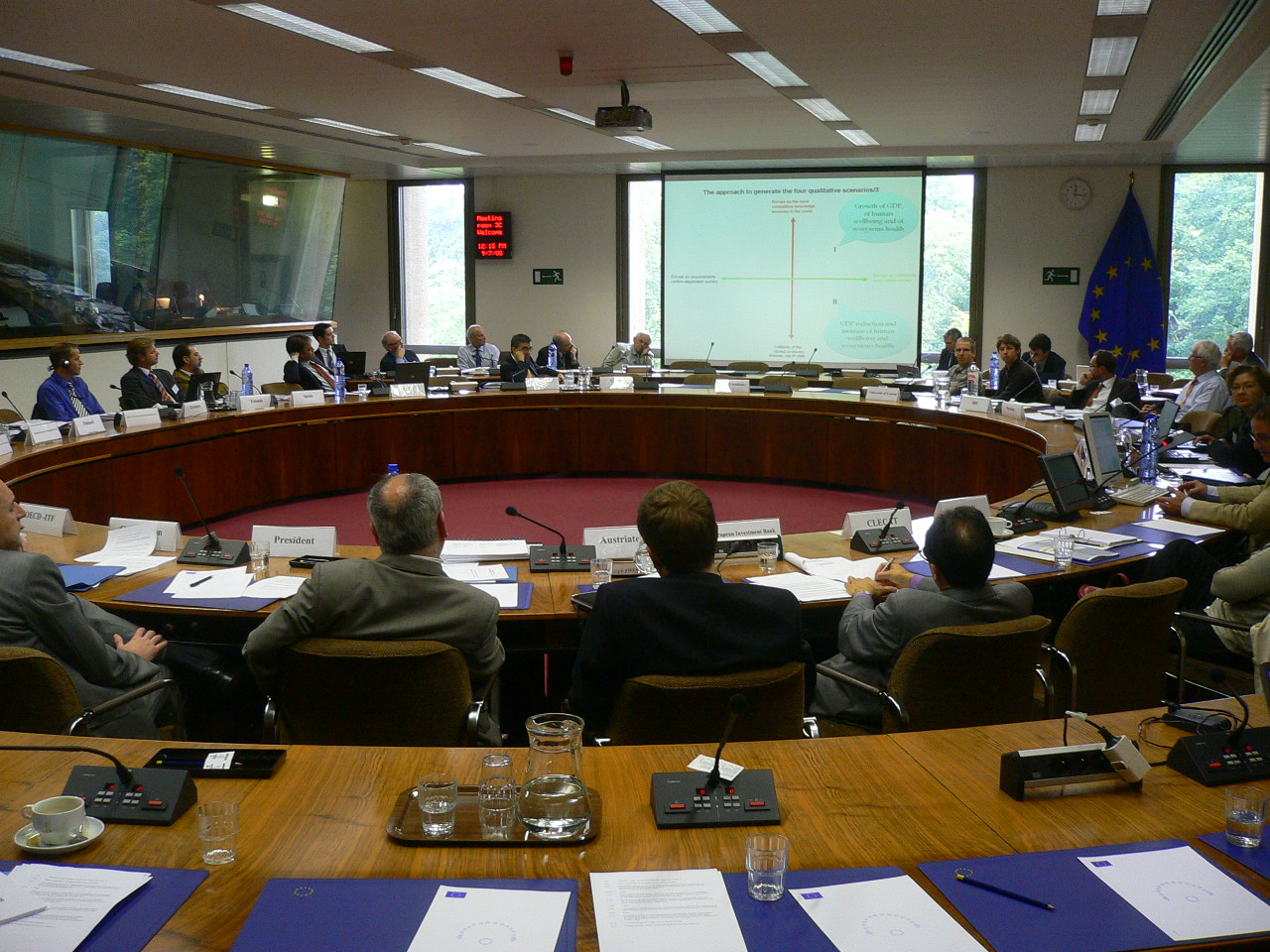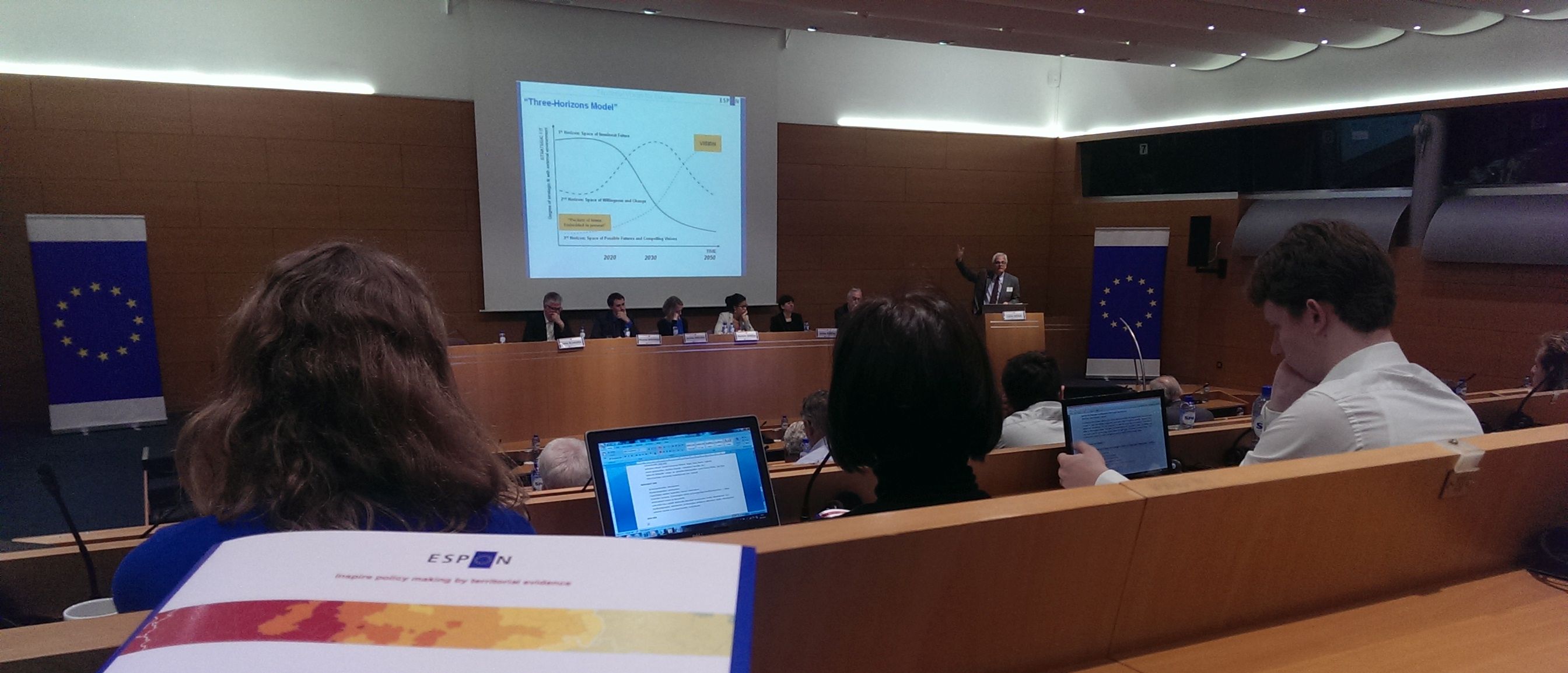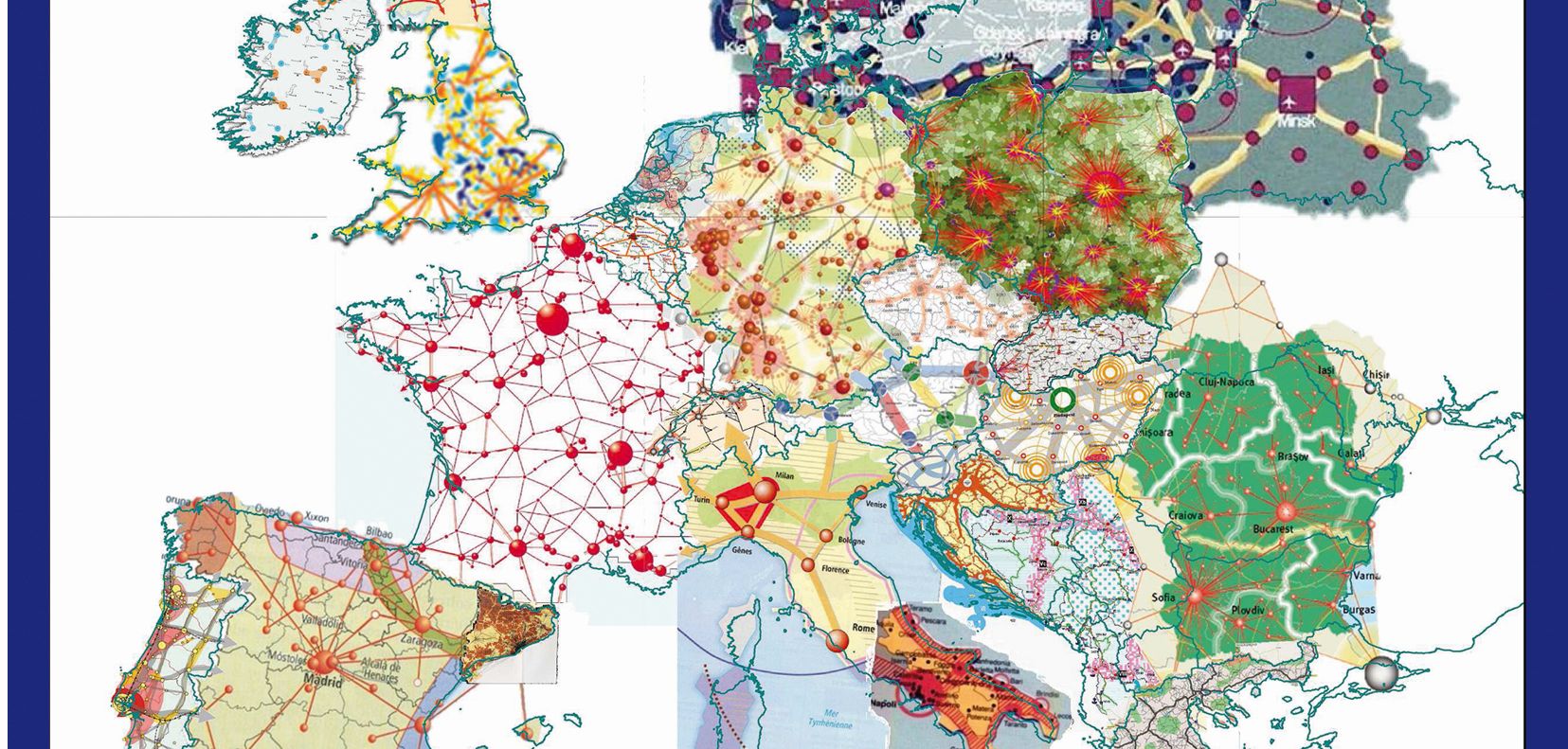THE POLITICAL CONTEXT
There is a window of opportunity to rethink Cohesion policies –its objectives, conditionalities and budget allocation criteria. According to Robin Huguenot and Alison Hunter, from the European Policy Centre, in their recent paper “Cohesion Policy: How can the EU sustain solidarity and investment at the same time?” (Panorama, 61, 2017), the rise of populism and Euroscepticism, in the 2008 financial and economic crisis aftermath, particularly among disadvantaged groups, has increased pressure on the EU to strengthen its investment and solidarity instruments, especially Cohesion Policy. On the other hand, it is also true that with Brexit expected to lead to substantial EU budget cuts, Cohesion Policy (CP) is likely to have a smaller budget in the next multi-annual financial framework with additional, new priorities. Effectiveness in driving EU cohesion is, once again, under review. Excessive bureaucracy, criticisms of ‘circular funding’, lack of fit between spend and need, and funding absorption challenges. There is a need for a full assessment of how CP can champion EU solidarity while ensuring that funding is delivered in a sustainable way. There is a wide consensus in the need for a bold reform of Cohesion Policy. Different alternatives are being discussed. The European Structural and Investment Funds (ESIF) introduced in the 2014-2020 as Common Strategic Framework (CSF) already aimed to rationalise EU investments –translating the objectives of the EU Growth Strategy into workable actions for the use of all funds, and therefore future ESIF can be further linked to the EU objectives at large, somehow diluting the original inter-regional solidarity purpose and limiting the role of local and regional institutions. The Cohesion Policy solidarity impact could also be reinforced to deal with the increasing disparities within cities and regions, as well as with neighboring countries, risking social inclusion and exacerbating political conflicts; having Cohesion policy a high visualisation it could also favour to counter-balance rising Euroscepticism –but this impact has also being disputed. The application of adequate ex-ante macro-economic governance conditionalities will improve the positive impact of the funds.
The EU project requires fresh momentum, underpinned by bold reform of CP. To enhance its credibility and purpose, the policy’s economic, social and territorial objectives should be repositioned at the core of the EU project. CP’s relevance and value should be better integrated and communicated across the entire EU policy and funding framework streamlining the rules and delivery systems and aligning CP with economic governance to increase scale efforts and leverage investment. Some of new proposals may face resistance. However, in the current environment, it is in the interest of all CP partners to seriously consider possible reforms to make the future policy fit for purpose post 2020. The worst of all outcomes would be a cut in funding without grasping the opportunity for reform and prioritization.
The Cohesion Policy has no yet the explicit political goals and targets that most other European policies have, and this would be a key interest of a European Territorial Framework. Other sectors have developed policies with a more or less explicit territorial dimension such as Transport and Energy (e.g. with the Trans‐European Networks), and Environment (e.g. with Natura2000), but the synergies of them in a given place remain just implicit. The policy aim of territorial visions, and Framework Reference documents is therefore to contribute to give more coherence sectorial policies, as well as a provide for a more explicit territorial basis for the best allocation of European Structural and Cohesion Funds across territories and sectors.
We believe, on the other hand, that the intense policy debates generated during the 2008 economic crisis in relation to Europe as a project, and more in particular in relation to the contradictory impact of Cohesion policies on different economic circumstances and territories, indicates the necessity of rethinking European Cohesion policies for the next period up to 2030 and advancing towards a Territorial Reference Framework a new Territorial Agenda post-2020. The necessity to rethink Cohesion policies in the context of possible budget cuts after Brexit opens a window of opportunity for bold reforms.
Despite a general consensus on the importance of the territorial dimension for economic growth, social equity, and sustainability, as well as the relevance of the “place-based” approach to facilitate policy coordination among sectors when applied at urban and regional scale, policy processes in the field of territorial development are not sufficiently linked to those in other decisive fields.
A number of policy visions for the development of the European territory have been developed over the years aiming to provide for the basis for a possible European territorial development policy framing Structural Funds (created in 1975), and then Cohesion Funds (created in 1992). It is fair to say, according to the ESPON 2013 research project, ET2050 – ‘Territorial Scenarios and Visions for Europe’, that many of these visions, despite their value have had a political influence bellow their initial ambition. Therefore, a good understanding of the merits and limitations of the previous experiences is indispensable, as much as an in-depth understanding on nowadays debates, in the economic crisis aftermath, after Brexit. It is from the recognition of all previous efforts that it is likely building up political legitimacy from all previous efforts. According to Böhme K. et al (2011) almost twenty years of intergovernmental cooperation on territorial development among the EU Member States (cf. European Spatial Development Perspective, Territorial Agenda of the European Union) has barely reinforced multiannual programming in relation to EU development (or Cohesion) policy (cf. Lisbon and Gothenburg Strategies, Europe 2020‘ Strategy). No serious attempt has been made to more effectively link these two processes together in order to explore their synergies and thus to avoid paying the high price of non-coordination. Numerous reasons stand behind this unintentional but long-lasting separation of policies at the EU level. Among the most important are:
- the lack of mutual understanding on policy grounds (e.g. the failure to translate the provisions of the Territorial Agenda relevant for Europe 2020‘ into policy provisions/regulations),
- the complexity of the territorial approach, exacerbated by its technical jargon, which may appear somewhat esoteric to outsiders,
- the low profile of EU authorities in the territorial debate due to a lack of formal competences to make policy decisions on territorial development,
- the lack of convincing evidence on the added value of the territorial approach for policy effectiveness.
The Council of Europe, a pan‐European organisation created in 1949 was the driving force behind a Community first concern with spatial planning: with the creation of CEMAT (the European Conference of Ministers responsible for Regional Planning), to organise ongoing coordination of spatial planning among Member States, in 1968; the adoption of the European Outline Convention, to provide a legal framework for cross‐border cooperation between territorial authorities (Madrid, 1980); and above all, the adoption by ministers of the European Spatial Planning Charter (Torremolinos,1983).
At the Community level, it was the European Parliament that launched the first initiative (based in part on the work done by la CEMAT), particularly through the so‐called Gendebien resolution on a European spatial planning policy, adopted in 1983; the resolution concerning a Coordinated spatial planning policy was adopted in 1990. Then, the first territorial analysis of European Development patterns and prospects were developed by the European Commission in the Europe 2000 (1991) Europe 2000+ (1994) programs and the Compendium of Spatial Planning Systems and Policies in the European Union (1997‐ 2000) by the DGXVI, now DGREGIO. Later on, the European Spatial Development Prospective (ESDP) was approved by the Informal Council of EU Ministers responsible for Spatial Planning in 1999. Following the ESDP approval, the Study Programme on European Spatial Planning (SPESP) was launched, and then European Spatial Planning Observatory Network (ESPON) Programme was created (currently renamed as European Observation Network for Territorial Development and Cohesion). Since the year 2000, ESPON has been conducting a number of research projects that have largely contributed to a knowledge‐base on territorial dynamics.
In the Lisbon Treaty (2007), states Article 3 that the Union shall promote economic, social and territorial cohesion, and solidarity among Member States. It shall respect shall ensure that Europe’s cultural heritage is safeguarded and enhanced. In 2007 the Commission launched a public debate on territorial cohesion by issuing the Green Paper on Territorial Cohesion. The European Commission asked Fabrizio Barca to prepare an independent report analysing the recent practice and achievements of EU Cohesion Policy while proposing various policy steps to redirect it in view of the 2014‐2020 period. This report was published in April 2009, making a strong case for basing future EU regional policy programmes and operations on a “place‐based approach”, a notion previously elaborated by the Organisation for Economic Cooperation and Development (OECD).
Based on the Europe 2020 Strategy (2010) and the outcomes of the debate articulated around the Green Paper on Territorial Cohesion (2008) a Territorial Agenda 2020 was adopted (2011) –a significant step ahead however its limitation on governance. The first priority was, following ESPD, “Promoting polycentric and balanced territorial development as an important precondition of territorial cohesion and a strong factor of territorial efficiency”. After 2011, the Commission adopted Roadmaps to support the progress towards the thematic objectives and headline targets established in the Europe 2020 Strategy with a long‐term view: Roadmap to resource efficient Europe (COM(2011) 571 Final); Roadmap for moving to a competitive low carbon economy in 2050 (DG Clima, COM(2011) 112 final); Energy Roadmap 2050 (DG Energy, COM(2011) 885 Final); Roadmap to a Single European Transport Area – Transport White Paper (DG Move, COM(2011) 144 Final). During the latest years, a number of relevant political initiatives and studies have been developed in Europe:
- Growing regional disparities and asymmetric development trends, particularly since the onset of the global financial crisis, have been identified by the Conference for Peripheral and Maritime Regions’ (CPMR) forum on the future of Europe as a significant contributing factor to growing ‘Eurosceptism’.
- The Committee of the Region’s (CoR) opinion on the future of Cohesion Policy post-20201, published in 2016, notes that the current Europe 2020 growth strategy does not sufficiently take into account Europe’s territorial divide and the differing development challenges in Europe’s regions
- The development of various macro-level EU strategies and policies that have a very strong and indirect influence on territorial development (e.g. the Juncker Commission’s 10 Priorities; the Investment Plan for Europe; the 2030 Framework for Climate and Energy Policy; the Digital Agenda for Europe; the TEN-T network; the Marine Spatial Planning Directive etc.)
- As discussed in a recent EPRC Paper, Cohesion Policy is in danger of being overloaded with numerous contradictory objectives, diluting its Treaty focus on convergence and reducing the importance of ‘place’ and ‘territory’ in the design and implementation of programmes
- The challenge of ‘Brexit’
- In March 2017, the European Commission presented a White Paper on the Future of Europe with five scenarios for developing the EU27 by 2025








